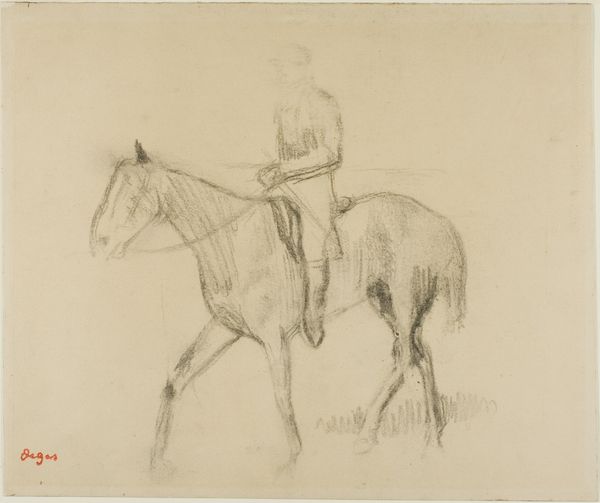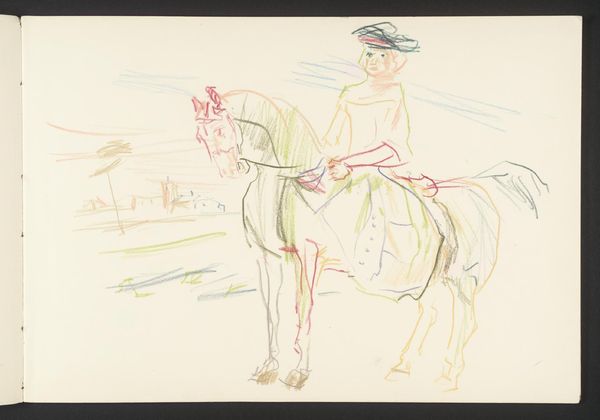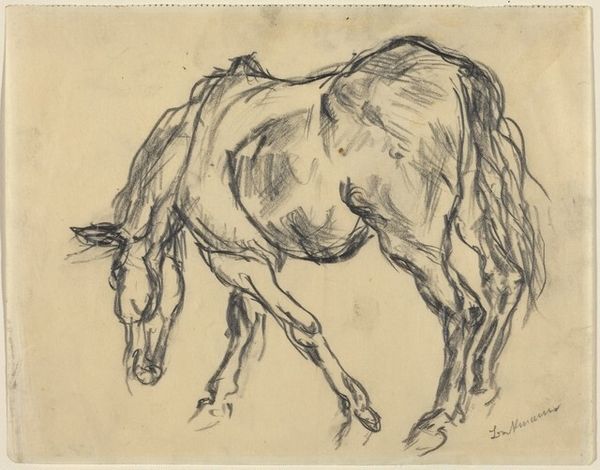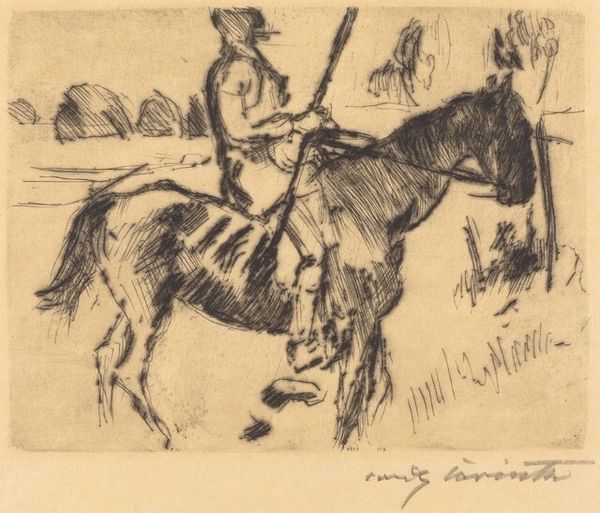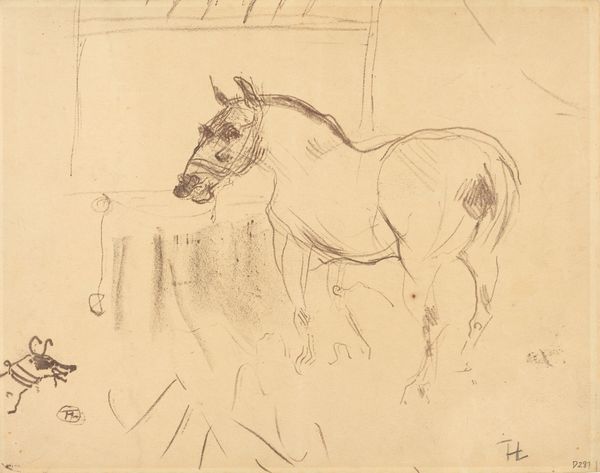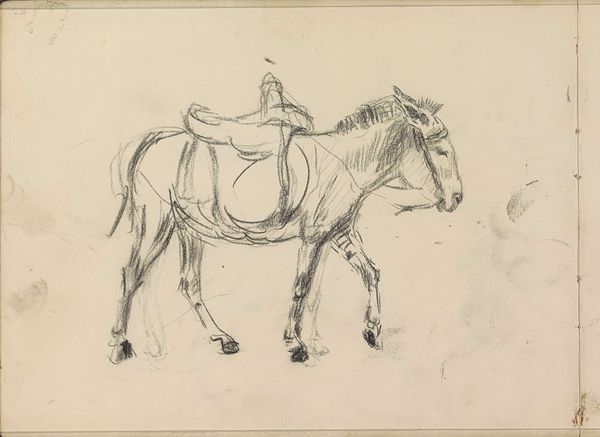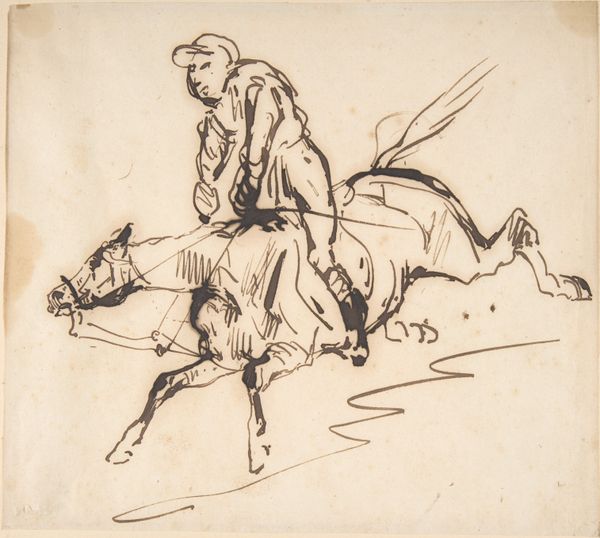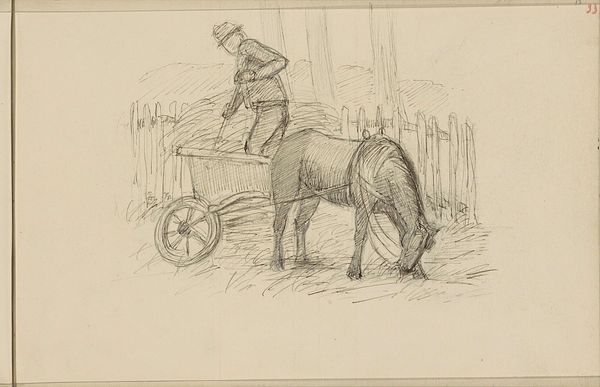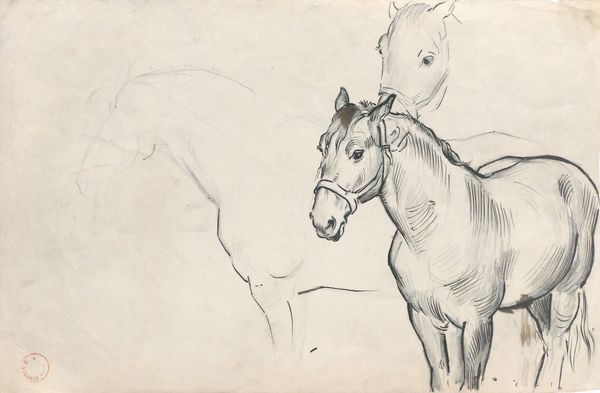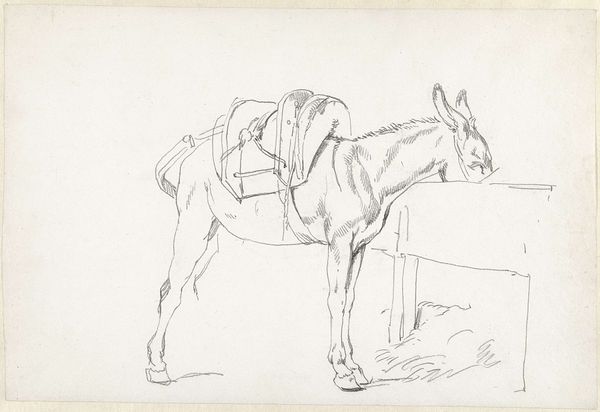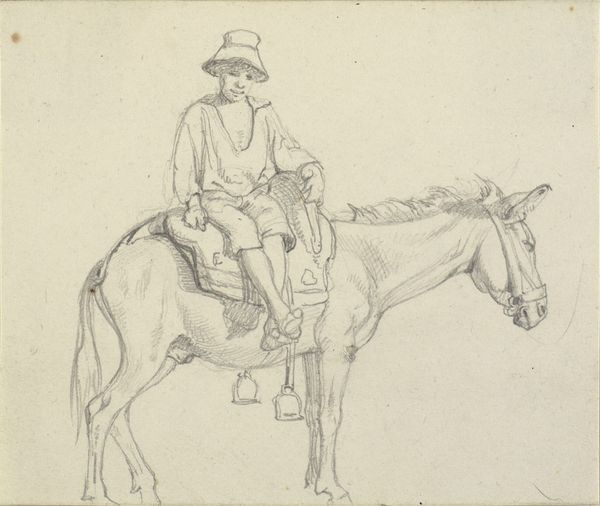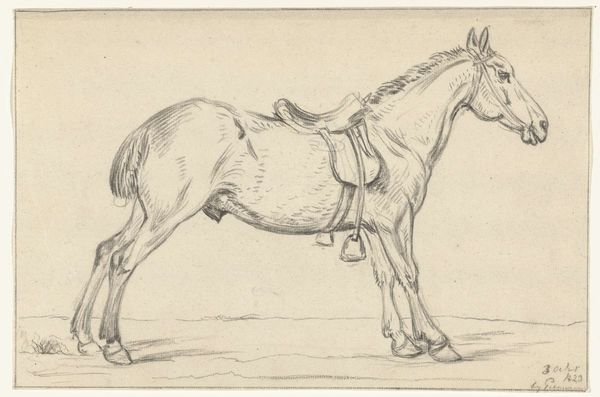
Dimensions: 55.5 x 42.5 cm
Copyright: Public domain
Curator: Let's discuss Toulouse-Lautrec's pastel drawing, "Amazone," created in 1899. It's currently held at the Tate Britain. Editor: My first thought is how solitary it feels. The woman, elegantly dressed, is set against a rather bleached-out background, which really isolates her form. Curator: Precisely. The composition isolates the figure. Look at the limited color palette – primarily browns, greens, and yellows. Lautrec uses the pastel medium to create texture, particularly in the horse's coat, employing short, overlapping strokes. The negative space almost neutralizes the figures as one studies its formal and spatial elements. Editor: I’m intrigued by how Lautrec represents this woman. We often associate him with the nightlife of Montmartre, but here, we see an upper-class woman on horseback. This piece challenges a typical view one might have regarding Lautrec. It certainly suggests commentary regarding class and leisure, doesn't it? Curator: Undoubtedly. The work prompts questions about social class and identity. Equestrian portraits historically signified wealth and status. But there’s an interesting ambiguity. Lautrec isn't idealizing her. Her posture is correct, but not necessarily heroic. I wonder how the socio-economic changes were felt by Toulouse-Lautrec, in 1899, as a member of the upper class in France. Editor: And look at the sketch-like quality; it isn’t hyper-realistic or detailed. We see a clear, tangible connection to Impressionism, but it also is almost as if we are viewing a fleeting moment in the subject’s history. What implications can we garner regarding the gaze of women by society? Curator: Very true. Lautrec uses techniques of the Impressionists, but subverts that very paradigm in several ways. In particular, consider Lautrec's simplification of form as one looks through and at it within a Post-Structuralist lens. What implications are there in his work, regarding society? Editor: Thinking about it now, seeing Lautrec's departure from his usual milieu actually deepens my understanding of the period as well as this work. We see in Amazone, even with the more conventional subject, a sense of modern detachment. Curator: It seems that Lautrec, in "Amazone," prompts viewers to reconsider assumptions about genre and class, especially given how these intersect and diverge via societal means of interpretation.
Comments
No comments
Be the first to comment and join the conversation on the ultimate creative platform.
